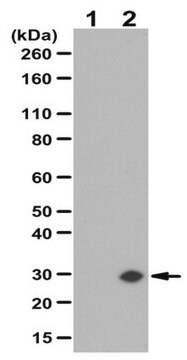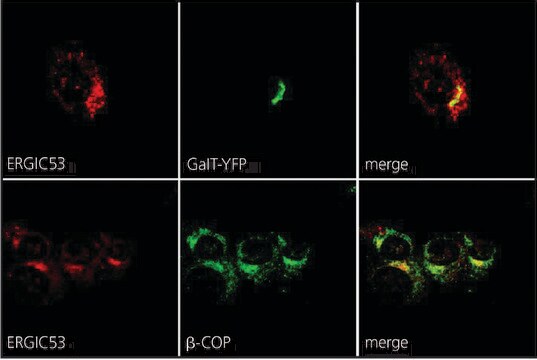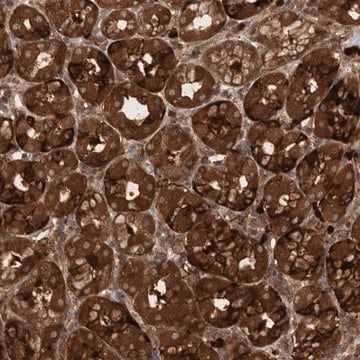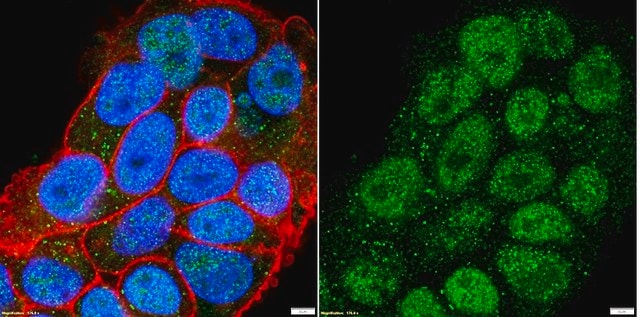G6916
Anti-GADD153 antibody produced in rabbit
affinity isolated antibody, buffered aqueous solution
Sinónimos:
Anti-CHOP-10
About This Item
Productos recomendados
biological source
rabbit
conjugate
unconjugated
antibody form
affinity isolated antibody
antibody product type
primary antibodies
clone
polyclonal
form
buffered aqueous solution
mol wt
antigen 29 kDa
species reactivity
human
technique(s)
immunocytochemistry: 5-10 μg/mL using Hela human cell
microarray: suitable
western blot (chemiluminescent): 1:200-1:400 using whole cell extract of HEK-293 over-expressing GADD 153.
UniProt accession no.
shipped in
dry ice
storage temp.
−20°C
target post-translational modification
unmodified
Gene Information
human ... DDIT3(1649)
rat ... Ddit3(29467)
General description
Immunogen
Application
- nuclear and cytoplasmic fractions extracted from rat insulinoma (INS) cells to study CHOP Expression in response to ER stress
- whole cell lysates prepared from ER stress induced rat pancreatic tissues
- whole cell lysates prepared from ER stress induced pancreatic insulin-producing cells
It is suitable for immunocytochemistry at a working concentration of 5-10μg/mL using Hela human cell and microarray. It is also suitable for western blotting at a working dilution of 1:200-1:400 using whole cell extract of HEK-293 over-expressing GADD 153.
Biochem/physiol Actions
Physical form
Disclaimer
Not finding the right product?
Try our Herramienta de selección de productos.
Certificados de análisis (COA)
Busque Certificados de análisis (COA) introduciendo el número de lote del producto. Los números de lote se encuentran en la etiqueta del producto después de las palabras «Lot» o «Batch»
¿Ya tiene este producto?
Encuentre la documentación para los productos que ha comprado recientemente en la Biblioteca de documentos.
Nuestro equipo de científicos tiene experiencia en todas las áreas de investigación: Ciencias de la vida, Ciencia de los materiales, Síntesis química, Cromatografía, Analítica y muchas otras.
Póngase en contacto con el Servicio técnico






